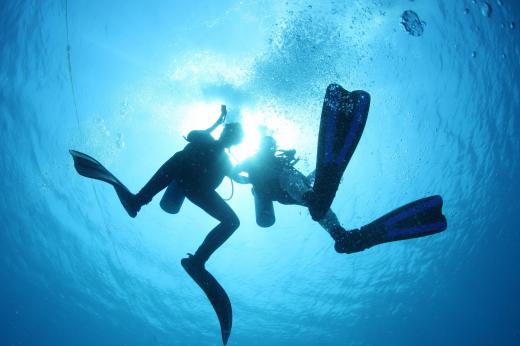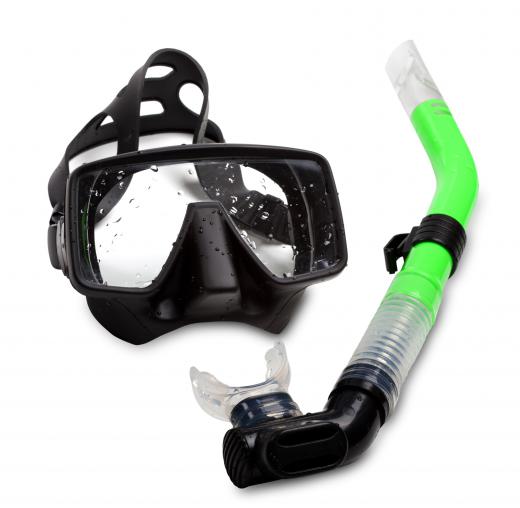Dive gear is used by people who want to submerge themselves in water for extended periods of time, and comes in many shapes and sizes. The most notable type of dive gear is the Self-Contained Underwater Breathing Apparatus, or SCUBA gear, which comes in two main categories: open-circuit and closed-circuit gear. In addition to the breathing apparatus itself, however, there is a wide range of additional dive gear that a diver can rely on to make their experience more pleasant.
Open-circuit SCUBA gear is the most simple type of dive gear, and is also the most commonly used. It is often referred to simply as an aqualung, and involves the diver breathing in from the equipment and breathing out into the surrounding water. Open-circuit equipment was invented by Jacques Cousteau, and the modern single-hose type was invented by Ted Eldred. The alternative to open-circuit gear is closed-circuit gear, often referred to as a rebreather. In a rebreather system, air is inhaled from the equipment, and exhaled back into the equipment, where it is processed so that it can be breathed again.

For longer dives, a closed-circuit system is often preferable, because longer durations can be achieved with a comparable weight. For example, an average sized rebreather tank and decent soda lime scrubber to filter the air can allow dives of four or five hours. In contrast, an average open-circuit system allows for a dive of only about an hour or less, making it fine for sport diving, but little else.

Other types of dive gear eschew both open- and closed-circuit SCUBA entirely. A snorkel, for example, is a very low-tech form of underwater-breathing device, which essentially consists of short tube that allows a shallow diver to keep their mouth and nose underwater while still breathing air from the surface. A surface-supplied diving system is similar to a snorkel, except with a much longer tube, pumping water down deep to sustain the diver. Originally this was used for long professional dives, but in the modern world it is often used as Snuba® equipment to depths of only 20 to 30 feet (6-9m) for tourists.

In addition to breathing equipment, dive gear often also includes some form of protective equipment to guard the body. A wetsuit or dry suit is the type most commonly seen, which provides protection from the extreme cold often seen in large bodies of water. Wetsuits allows water to penetrate the neoprene layer, creating an insulating layer of water that keeps the body warm. Dry suits, on the other hand, are used in extremely cold water, or in warmer water when the diver expects to be underwater for a long time, and actually keep water from entering at all. Suits are often designed to offer protection from stings, or from abrasion from rocks or coral.
Other pieces of dive gear include fins, which allow a diver to displace more water when moving their hands or feet, buoyancy devices like a backplate or buoyancy compensator, and electric diver propulsion vehicles to help a diver move more quickly and further. Divers may also wear special diving masks, underwater flashlights or torches, diving knives, weights, or lifting bags to help bring things back to the surface.
